#patrick fugit icons
Explore tagged Tumblr posts
Text
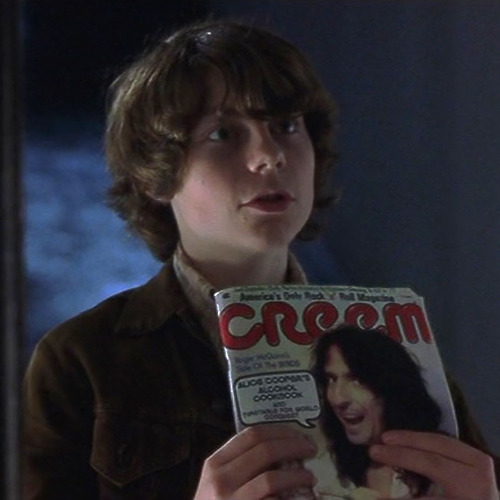
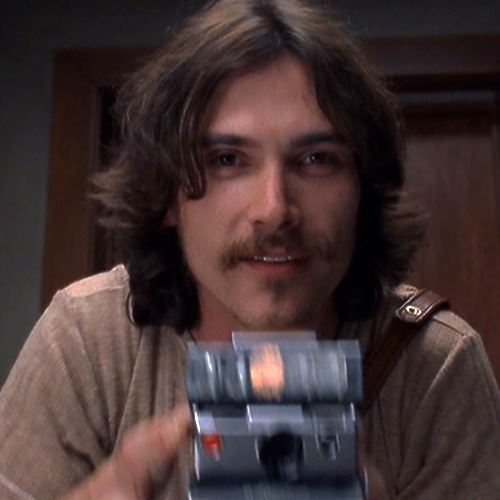
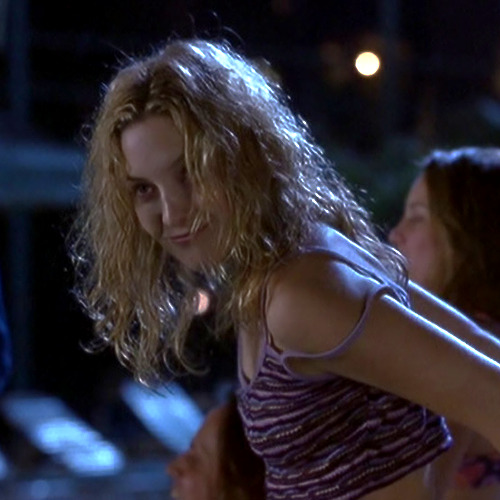


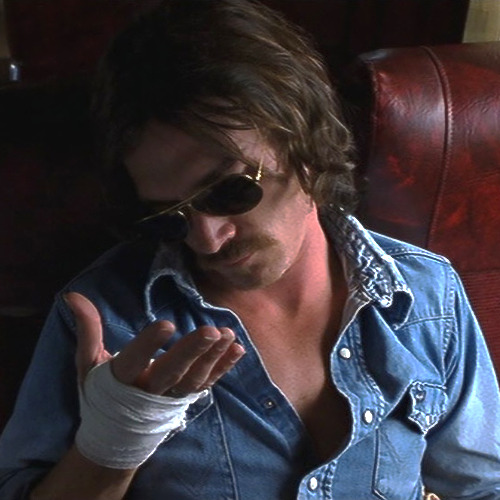
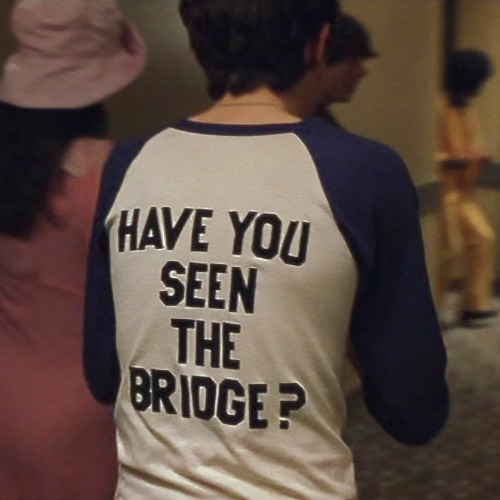

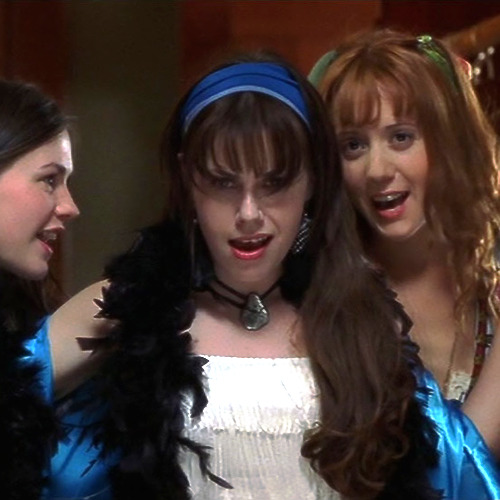
#twitter stuff#twitter icons#without psd#movie icons#icons without psd#almost famous#almost famous icons#kate hudson icons#kate hudson#anna paquin#anna paquin icons#patrick fugit#patrick fugit icons#fairuza balk#fairuza balk icons#billy crudup#billy crudup icons
64 notes
·
View notes
Text
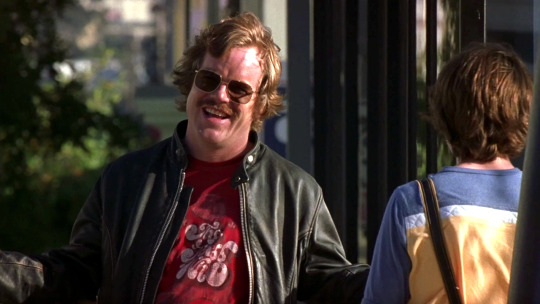



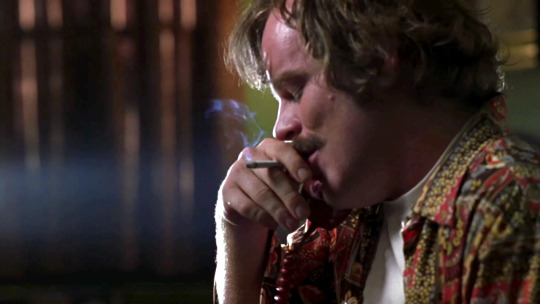


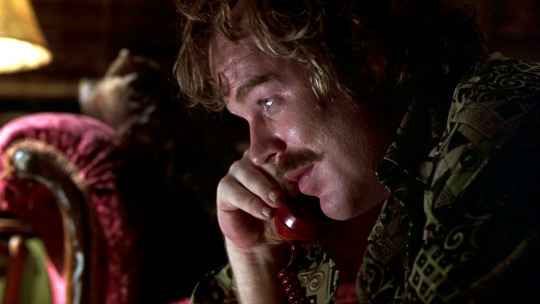
The summer is almost over and I can't leave the season without this classic—Almost Famous (2000), dir. Cameron Crowe. I used to think it was a perfect start-of-summer film, but I'm realizing may be better suited to these late August, early September weeks.
I read a comment the other day from someone who was not the biggest fan of Philip Seymour Hoffman's acting, who said the real test of his skills and legacy would be which of his performances would stand the test of time. They doubted any of them would—he didn't have any "iconic" characters, they argued.
While I obviously disagree with their entire assessment—for just one example, The Master and his other projects with PTA will be/remain classics 50 years from now—it did make me think. Phil was, though it's a touchy term, often described as a character actor. Even when he was a leading man, he wasn't playing himself. An actual quote from him in 2002 I just found: "Even if I was hired into a leading-man part, I'd probably turn it into the non-leading-man part." He doesn't have an Indiana Jones, a James Bond, but I don't think that disqualifies him from having iconic or lasting characters.
That's what came to mind rewatching Almost Famous tonight, and I might argue Lester Bangs is PSH's most iconic character. If you consider the ratio between screen time and cultural influence, there's probably zero competition among his roles—under eight minutes of screen time vs. untold thousands of people who still quote, gif, share, gif, write, post, and otherwise remember and feel inspired by his words, over two decades later. (Dusty Davis might be the second-most influential, considering how many people got into storm-chasing thanks to Twister). He's a voice for generations of music lovers, film lovers, everyone who watched Almost Famous for the first time and fell in love with its magic or sided with Bangs' cynicism.
What does it matter what some stranger on the internet says, anyway. Whether people will be watching dozens of his films in 80 years or just a few or none at all, we're watching them now. Last night I found a tribute from film critic Brian Tallerico, from the days after Phil's death: "In Mary and Max, [PSH's character] Max says... 'We can, however, choose our friends, and I am glad I have chosen you.' Hoffman felt like more of a friend than another actor. And I am glad he chose us."
Patrick Fugit, playing William Miler, was just 16 when he starred in Almost Famous, his first movie ever. Phil was violently sick with the flu while filming, sweating and shaking and throwing up between takes. But he still found time to look out for others. Patrick wrote this remembrance of working with Phil, which is making me cry a lot as I reread it tonight:
They had lit the scene quite bright from the outside and the light was just behind Philip. So every time I would look at Philip, I would start squinting and my eyes would start watering, so I would kind of look down at the paper pad to pretend I was writing. They kept telling me, “Hey, you have to look at Philip when you read your lines.” I didn’t know how to say that I can’t actually physically keep my eyes on Philip but Philip had been watching me. He’s like, “Guys, c’mon! Can’t we move the fucking light? I mean, the kid can barely look across the table!” And he and [cinematographer] John Toll kind of got into it. John was like, “We’ll adjust it a little bit but the light’s there for a reason, buddy. We got to light the scene.” Philip said, “Fuck lighting! Do you want it to look fucking good or do you want the kid to be able to act!” ... Then they’re like, “Okay, we’ll move the light,” and then we shot the scene. But it was the first time where I got in a situation where I didn’t know if I could stand up for myself. And he just stepped up and did it for me. And then he kind of looked at me and smiled and said, “Dude, if something’s bothering you, you have to speak up.” I was like, “Okay, yeah, yeah, totally.”
#'dude if something's bothering you. you have to speak up.'#🥺#monday philm#almost famous#philip seymour hoffman#psh#*#thanks for choosing us phil. i'd love you if you were teaching english in france. if you were pumping gas in the midwest.#but i think you picked well. i love you making art.
12 notes
·
View notes
Text
Fugitive or Folk Hero? Unraveling the Mystery of Billy the Kid

Billy the Kid
The story of Billy the Kid is one steeped in mystery and folklore. He has been portrayed as both a dangerous criminal and a folk hero, but who was he really? Was he an outlaw or a victim of circumstance? These questions have puzzled historians for over 140 years. The mysterious life of Billy the Kid began in New York City in 1859 when Henry McCarty, later known as William H. Bonney, was born to Irish immigrants Catherine McCarty and Patrick Antrim. Little is known about his early childhood, but at some point between 1861-1864 his family relocated to Silver City, New Mexico where they lived with his stepfather William Antrim. By age 15 young Henry had already acquired several aliases including William H. Bonney and Billito Valdez y de Aquilar before eventually becoming known simply as ‘Billy the Kid’ by 1870s newspapers covering his exploits throughout Lincoln County, New Mexico Territory.
The Legend: Myth and Reality
The Legend of Billy the Kid is one of the most famous in American folklore that has been surrounded by a great aura of myth and mystery. Though Billy was only 21 when he met his end, his iconic status as an outlaw dates back to numerous stories told about him by people he knew or had interacted with during his time on Earth. In life, Billy was known to have been a daring, confident yet modest character; these traits have likely added further mystique to the history surrounding Billy's life and legends that have been passed down over time. Billy's wild escapades and his cunning ability to escape deadly situations have continued to both mystify and intrigue those interested in the legendary figure. Billy the Kid will forever be associated with the invincibility and mystique that surrounded him during his short but eventful life.
Crimes of Billy the Kid
Billy the Kid, born William Henry McCarty, was a notorious American outlaw who was active in New Mexico Territory during the 1860s and 1870s. Born to an Irish immigrant father and Mexican mother, Billy's criminal career began when he allegedly killed a blacksmith named Billy Bonney in August 1877. Billy is believed to have killed at least nine people throughout his life, although he may have been responsible for several more. He became increasingly well-known for his skill with firearms as word of his exploits spread throughout the borderlands area in which he operated. Billy the Kid's notoriety increased after escaping from jail and being unsuccessfully pursued by a posse led by Pat Garrett. Billy's life finally came to an end in July 1881 when Garrett shot him dead near Fort Sumner, New Mexico. Although Billy's infamous history has long been recounted in popular books and films, historical documents suggest that much of it is fictionalized or exaggerated.

El Paso Street in 1886. Street where Pat Garrett & Billy the Kid walked during their lifetimes. Photo by Visit El Paso. Flickr.
The Kids First Crimes
McCarty lost his mother when he was 15 years old. He received lodging and food from boarding house owner Sarah Brown in exchange for his labor. McCarty was apprehended on September 16, 1875, stealing food. A Chinese laundry was looted ten days later by McCarty and George Schaefer, who also stole two firearms and some clothing. He was imprisoned after being accused of theft. The Silver City Herald published the first article about him the next day, reporting that he had fled two days later and was now a wanted man. When Antrim pushed his stepfather out, McCarty found him and stayed with him, robbing him of clothes and weapons.
Early Run in with the Law
After the notorious Battle of Lincoln, four survivors – including McCarty - were implicated in a murder that shook up the Mescalero Indian Agency. However, their indictments would not last long: all except for his own were quashed due to conflicting evidence pointing at Constable Atanacio Martinez as being responsible instead. On October 5th, 1878, U.S. Marshal John Sherman contacted new Territorial Governor Lew Wallace about warrants he held for suspected criminals such as William H Antrim (also known by aliases 'Kid' and 'Bonny'). Notable among them was McCarty's warrant which went unserved because of "the disturbed condition" caused by a group of dangerous men still on the loose at that time.
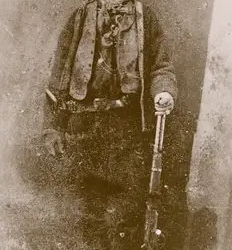
Billy the Kid 1859-1881. Photo by Joseph Bergen. Flickr.
Wanted by Lawman Pat Garrett
With a large bounty on his head, Lawman Pat Garrett was determined to track Billy down and bring him to justice. In pursuit of Billy, Pat Garrett never backed down and was soon celebrated as someone who could be counted on to bring justice to the wild west. Despite this, Billy continued to elude capture and remained wanted by Garrett for years. To this day his legend remains alive with stories about his daring escapes still being circulated. About Pat Garrett Lawman Pat Garrett is perhaps best known for his pursuit of Billy the Kid. After Billy had already killed two lawmen in Texas, Garrett was chosen to lead a band of men in pursuit of the outlaw, eventually killing him during a shootout in 1881. Prior to joining Billy's hunt, Garrett served as the sheriff of Lincoln County in New Mexico and earned the trust of many residents due to his straightforward approach and attention to detail. Before becoming a lawman, he lived an adventurous life, owning saloons and serving as a buffalo hunter and scout for both military expeditions and railroads. In addition, he pursued other occupations such as farming and ranching—experiences that would come in handy during his time as a lawman.
Local Lincoln County Support
Billy the Kid was famous for his lawless ways, but he and his gang were also strong supporters of their local community. Known as the Regulators, Billy, and his group provided protection to small farms in Lincoln County; they also helped provide basic necessities like food to those who needed it. Billy would also use scraps of wood to repair broken fences and wagons of local farmers, easing their burden while they worked to make a living. Billy's actions demonstrate that people in need are often supported best by the members of their own community.
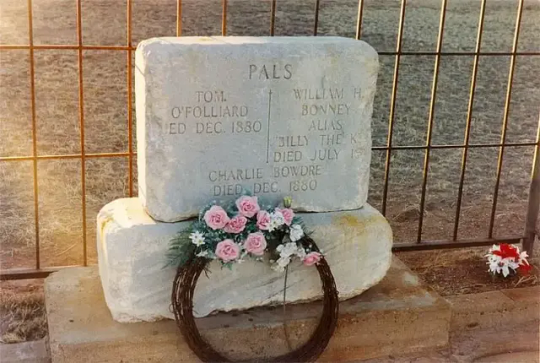
Billy The Kid tombstone with Tom O'Folliard and Charlie Bowdre, Fort Sumner, New Mexico. Photo by Zooomabooma. Flickr.
Manhunt for Billy the Kid
Wanted by law enforcement for multiple murders and robberies, Billy the Kid achieved notoriety through his evasion of capture for two years after his crime spree began in 1877 in Lincoln County, New Mexico. Billy's most famous feat of eluding those charged with his arrest lies in his escape from a Lincoln County jail in April 1881 with the use of a smuggled handgun. He managed to avoid his pursuers and remain on the run until he was shot dead in a saloon by Sheriff Pat Garrett later that year.
Escape from Lincoln County Jail
Deputy Bob Olinger escorted five other detainees across the street for a supper on April 28, 1881, while Garrett was away in White Oaks collecting taxes, leaving James Bell, another deputy, and McCarty alone in the jail. When Bell and McCarty returned to the jail, McCarty was walking in front of Bell up the steps to his cell when he concealed around a blind corner, slipped out of his shackles, and beat Bell with the loose end of the cuffs. McCarty had begged to be brought outside to use the restroom behind the courthouse. Bell attempted to flee, but McCarty seized his revolver and fatally shot him in the back. McCarty entered Garrett's office while being restrained and stole a loaded shotgun that had been left there by Olinger. Before unshackling and fleeing, McCarty killed Olinger.
Changing Image of Billy the Kid
Billy the Kid's image has certainly changed over time. Though Billy was a convicted felon and fugitive from justice during his lifetime, he has become an iconic outlaw figure in American folklore today. He is heavily romanticized; modern-day Billy the Kid enthusiasts often portray him as a hero looking for revenge against those who wronged him, rather than a criminal on the run. Billy the Kid even makes appearances in pop culture, such as novels, films, television shows, and music. His changing image reflects how society views the process of mythologizing well-known figures of history. Billy the Kid remains one of many fascinating historical figures whose legacy has endured to this day.
Conclusion
Pat Garrett's pursuit of Billy the Kid is one for the history books. The Lincoln County jailbreak in 1881 was a turning point in this epic manhunt, and despite Pat Garrett eventually killing him that same year, it only served to further cement his place as an iconic outlaw figure in American folklore. Even today, we see references to Billy the Kid everywhere from pop culture to historical accounts—a testament to how society views figures like him with admiration and respect even when they were criminals during their lifetime. It goes without saying that Pat Garrett played a critical role in bringing justice by pursuing Billy relentlessly and ultimately capturing or killing him; he stands as an example of those who strive for law enforcement against all odds. Sources: THX News & Wikipedia. Read the full article
0 notes
Photo









like or reblog
© gothmrlt
#outcast#outcast icons#kyle barnes#kyle barnes icons#patrick fugit#kyle barnes icon#patrick fugit icons#patrick fugit icon#icon#serie tv#serie
5 notes
·
View notes
Text
since we’re in the second half of the year now, i wanted to take a minute to talk about the movies in the first half of the year that i can’t stop thinking about. here’s a list of the moments, shots, performances, and more that i can’t stop thinking about.
under a read more because long posts are long:
- the warmth and compassion that saint frances (2019) has for nearly every character to grace the screen - the last of sheila entering the “good boat movie imo” canon
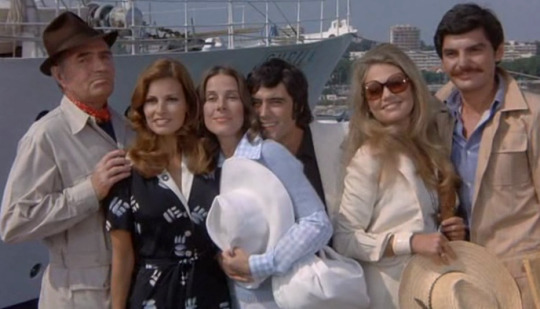
- the karate kid part two being a better movie than its predecessor - this iconic dress moment from follow the fleet:
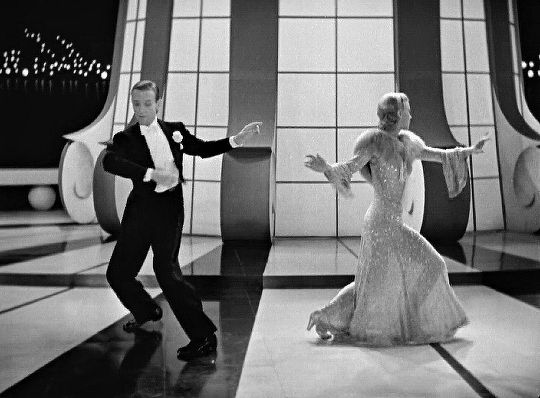
- "if i were a woman all of this would be acceptable" "if you were a woman, i would know how to compete with you" who would have thought that the columbo creators could destroy me twice in one lifetime with the amazing gay tv movie that certain summer (1972) - patrick mcgoohan’s deliciously evil performance as iago johnny cousin in othello all night long (1962), a criminally underrated actor. also he openly just starts smoking a joint in the film and i died. - marlina the murderer in four acts is a film i can hardly describe using words. i’ll say two: watch it. - good news, guys, the 1935 version of magnificent obsession is just as good as the 50s one

- william demarest’s constant pratfalling in the miracle of morgan creek - kiss me deadly, a completely incomprehensible film that is bookended with a truly ICONIC start and finish - the evils of bureaucracy as anchored by two incredible performances in quo vadis, aida? and dear comrades!
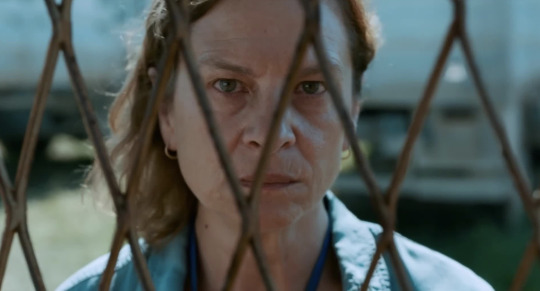

- paul muni showing just why he was a star in i am a fugitive from a chain gang! - these performances being fifty years apart and the exact same (in my mind):
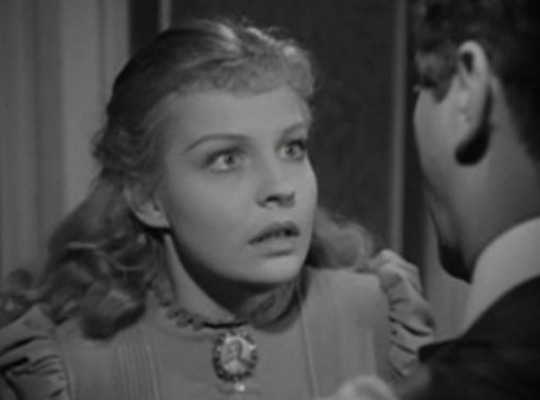
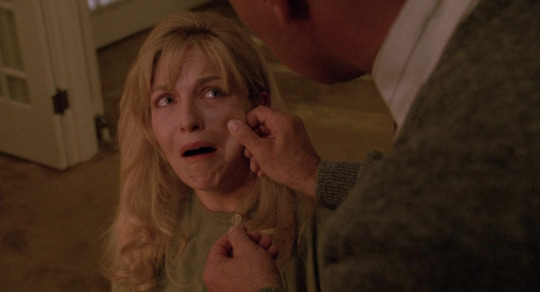
- the excellent premature ejaculation joke in la ronde. those fucking french. - angela lansbury eating the shit out of every single scene she’s in in the manchurian candidate - this behind the scenes photo of river of no return:

(#me and my butch gf)
- the scenery-chewing contest that is glenn close and john malkovich in dangerous liaisons - holes in a striped shirt as a visual metaphor for corruption and decay in her man (1930) - in the heat of the night’s cinematography being based around sidney poitier’s skin color and creating some of the best photography of him, period.
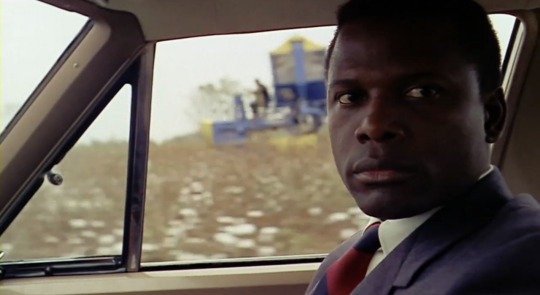
- charles grodin in midnight run and the great muppet caper single-handedly pulling me out of a severe depressive episode - carole landis being so beautiful in the technicolor moon over miami that i forgot every other person who was in the film
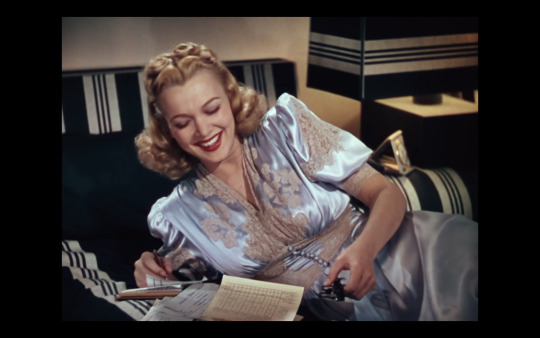
- and lastly, the film of the year for me, a film that shows all the ways patriarchy grinds down and kills women. a film that shows why we need class consciousness between women. a film that is a laugh in the face of all men. if there’s one film you come away from this watching, i hope it is a question of silence.
41 notes
·
View notes
Photo



The Holy Trinity of Pale Dark-Haired Teen Boys Coming of Age and Experiencing Their Bisexual Awakening
Patrick Fugit as William Miller in Almost Famous (2000) dir. Cameron Crowe
Liam James as Duncan in The Way Way Back (2013) dir. Nat Faxon & Jim Rash
Timothée Chalamet as Elio Perlman in Call Me by Your Name (2017) dir. Luca Guadagnino
#almost famous#the way way back#call me by your name#patrick fugit#liam james#timothee chalamet#william miller#duncan#elio perlman#seriously once cmbyn is out on dvd i need to do a back to back watch of this trilogy#i'm mean for real what an iconic trio#i could go on for years about the bisexual subtext with william and duncan
42 notes
·
View notes
Text
Album Review: Almost Famous soundtrack box set
In the 1990s, there was a trend for a short time of movie soundtracks getting a sequel, where a music-centric movie released a single-disc CD and it did well enough that a few months later there’d be a “Volume 2″ soundtrack album of all the songs in the movie that weren’t on the first soundtrack, i.e. Boogie Nights, Dazed and Confused and Trainspotting. By 2000, the soundtrack craze had simmered a little. The soundtrack to Cameron Crowe’s magnum opus Almost Famous featured 17 tracks when it was first released in Sept. 2000. I have to say I was a little surprised that Almost Famous, with the sheer amount of music in the film, didn’t get one of those “Volume 2″ soundtracks after the initial one. To celebrate the 21st anniversary of the film (last year was the big 20th), UMe recently released an expanded soundtrack featuring 103 audio tracks. That’s not a typo: 103! That is songs, sound bites from the film, and score. This also marks the first time in which all of the songs from the film have been released in one set.

the Super Deluxe 6LP soundtrack set
Crowe’s film is also his most personal film. Much like the main character William Miller, Crowe began writing for Rolling Stone as a teenager. When you’re watching the movie, there are several real life people portrayed in the film like Crowe’s mentor Lester Bangs (played by a scene-stealing Philip Seymour Hoffman) or Rolling Stone’s Jann Wenner and Ben Fong-Torres, but most of the characters are composites of numerous people from Crowe’s life. Stillwater (one of the all-time great fictional band’s in movie history) were a composite of The Eagles and Led Zeppelin. I always kinda hoped they would’ve released an album, like the way that Spinal Tap had a few albums. This past Record Store Day, I actually picked up the Stillwater EP of songs and demos. In this box set on CD, there is a disc of just Stillwater songs, demos and backstage jams. It is a must for fans of the movie!

The great fictional band Stillwater, photographed by Neal Preston
The film takes place in 1973 and there’s loads of nuggets from that era on the soundtrack: a whopping five songs from Led Zeppelin (only Cameron Crowe could make that happen!), The Who, Iggy and the Stooges, Joni Mitchell, Lynyrd Skynyrd, Neil Young, The Beach Boys and many more. It’s not just the big hits from those artists either, there’s loads of deep cuts. In terms of what’s new that hasn’t been commercially released yet: The Who’s version of “Amazing Journey / Sparks” made for the film, the cast sing-along to Elton John’s “Tiny Dancer” (such an iconic scene of them all smoking a peace pipe after some tension to sing on the tour bus to this song), Steely Dan’s live version of “Reeling in the Years”, Neil Young��s live version of “Cortez the Killer”, and the original motion picture score and score outtakes from Nancy Wilson (Crowe’s wife at the time and frequent collaborator).

Crowe on set directing Hoffman as Lester Bangs and Patrick Fugit as Miller
Music has always played an integral role in Crowe’s prior films, i.e. Peter Gabriel being blasted from a boom box in Say Anything, the Seattle music scene as the back drop to Singles, and Bruce Springsteen’s “Secret Garden” as the romantic heart of Jerry Maguire. But in Almost Famous, music isn’t just the backdrop, it’s the star of the film, front and center. Its not just a movie about a music journalist covering a a rock band, Crowe’s passion and enthusiasm for music is felt in every single frame of this film. The music, both archival and original, needed to support that and it does. This box set is a real treat for fans. I got to review the vinyl edition, which includes a replica of William Miller’s high school notebook, containing a 40-page photo book with recollections from cast and crew including Crowe and Wilson. There’s tons of other bells and whistles like a Stillwater tour poster, Stillwater ticket stubs and best of all, the 1973 Rolling Stone Stillwater issue that William wrote. The CD edition includes the Stillwater and Wilson songs and demos. But the real highlight here is the music itself. When listening to the 6 LPs, it kept reminding me of those iconic scenes in the film: the “Tiny Dancer” sing along, Zeppelin’s “Misty Mountain Hop” as the band arrives in NYC and learn they are getting the Rolling Stone cover, and Cat Stevens’ “The Wind” as Penny Lane dances alone in the venue, the list goes on.

soundtrack cover
As William’s older sister Anita says in the film as she urges William to find and explore her record collection: “One day you'll be cool. Look under your bed, it'll set you free.” That’s kinda how I felt listening to this box set!
For info on the Almost Famous Uber box set: https://soundtrack.lnk.to/AlmostFamousPR
5 out of 5 stars
#almost famous#almost famous soundtrack#album review#cameron crowe#stillwater#led zeppelin#the who#Elton John#steely dan#neil young#nancy wilson#rolling stone magazine#cat stevens#music nerd#film geek
3 notes
·
View notes
Link
https://ift.tt/2WZpvJm #

In stories about growing up for audiences who are growing up themselves, a strong main character is a necessity. Coming-of-age stories have been around for centuries and have always been popular in cinema, from the days of James Dean to the modern world of Netflix originals.
Related: 10 Of The Best Coming Of Age Movies Everyone Needs To See
While there are many elements of coming-of-age movies that work together to create one timeless tale, such as the soundtrack and shooting locations, the key is a lead protagonist with whom the viewer can wholly identify and empathize. Over the years, there have been some truly impressive young actors who nailed this brief and delivered performances that will forever stand out in their careers.
10 Nick Robinson – The Kings Of Summer (2013)

In a modern coming-of-age tale for fans of Stand By Me (1986), Nick Robinson stars as Joe, a teenager frustrated with his father’s micromanagement. To escape his smothering suburban life, he invites his best friend and an unusual new acquaintance to build a house in the woods and live off the land.
With humor as this movie’s crowning glory alongside breathtaking shots of the Midwest, Robinson demonstrates his acting range in an impressive feature film debut. He manages to effortlessly keep up with comedic veterans like Nick Offerman and Marc Evan Jackson but also demonstrates control and solemnity in the movie’s tenser moments.
9 Thomas Mann – Me And Earl And The Dying Girl (2015)

Greg is an unusual choice for a story’s main character, and Thomas Mann captures his socially awkward nature but chameleon-like behavior effortlessly. Although Greg has made it his mission to “remain on low-key good terms” with every student in school, he struggles to see outside of himself until he becomes friends with terminally ill Rachel (Olivia Cooke).
Related: 10 Best Coming Of Age Comedy Dramas Like Juno
Greg’s development is displayed with as much poise as such a gauche character can be afforded, from seeming emotionally blank to succumbing to grief in Rachel’s room. Opposite Nick Offerman and other great talents in Me And Earl And The Dying Girl, Mann’s comedic delivery, both verbal and physical, is truly something to behold and never wanes.
8 Elliot Page – Juno (2007)

Juno is the blueprint for American Independent cinema, primarily for its Oscar-winning script and unconventional story of teen pregnancy. With a host of celebrated actors surrounding them, Elliot Page shines in what is arguably their most memorable and beloved role.
The offbeat comedy and sarcastic quips of Juno is one for the textbooks, and Elliot carries it with ease from start to finish; the odd vocabulary tossed around rolls as effortlessly as standard English off their tongue. They may appear unimposing in stature, but they dominate every scene with wit and hilarious delivery to make not only an unforgettable movie but a memorable main character.
7 Patrick Fugit – Almost Famous (2000)
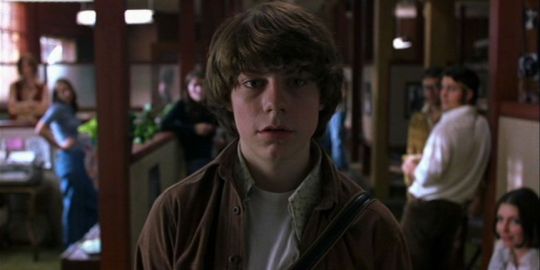
Aspiring writer William is something of a wallflower amongst the larger-than-life personalities of the band Stillwater and transfixing roadie Penny Lane (Kate Hudson), but he manages to hold his own and becomes somebody on whom they can all rely. Similarly, Patrick Fugit could have shrunk next to the more experienced actors beside him, but he triumphs.
The fresh-faced actor brings shining optimism and gentleness to a story of wild parties and volatile emotions. He captures William’s level-headed nature and wisdom beyond his years while still exuding the excitement of a newcomer to the rock and roll scene, perfectly balancing youth and innocence with shrewdness and morality.
6 Dustin Hoffman – The Graduate (1967)

A timeless tale of disillusionment in the face of change, The Graduate is fondly remembered for its incredible soundtrack from Simon and Garfunkel and the iconic affair with Mrs. Robinson (Anne Bancroft). Besides that, in a career-launching role, Dustin Hoffman proves his mettle as a force to be reckoned with onscreen.
Despite having an affair with a much older woman (and later falling for her daughter), Benjamin is a graceless and self-conscious leading man, and Nichols cast Hoffman with the belief that he had the perfect demeanor for the role. Between his personality and superb acting ability, Hoffman pulls off a memorable performance and is one of the main reasons why The Graduate has become a classic to stand the test of time.
5 Miles Teller – The Spectacular Now (2013)
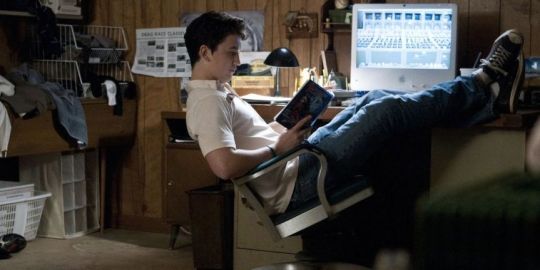
To bring to life hard-partying Sutter from Tim Tharp’s novel of the same name, the correct actor was called upon. Miles Teller oozes charm in this role and makes it easy to understand how Sutter has made it through life without a thought for the future since everything comes easily to him at the moment.
Besides being the life of the party and effortlessly sweet, Sutter is a young alcoholic who, below the surface, realizes that he is sabotaging his future, and Teller does a marvelous job of exploring this side to the endearing protagonist. The serious self-deprecation that follows reuniting with his absent father, who is a vision of Sutter’s own future, is relayed masterfully and leaves the audience in awe of his performance.
4 Saoirse Ronan – Lady Bird (2017)

Star Saoirse Ronan had a number of stellar movies under her belt before Greta Gerwig’s Lady Bird, with her first Oscar nomination at the age of thirteen only the beginning of an illustrious career. Her range sets her apart from other young actresses in the game, spanning from sci-fi to period drama to raw, coming-of-age movies such as this.
The main character of this tale is anything but meek. Ronan is strong-willed and assured in the role and explores the everyday highs and lows of growing up while cultivating believable onscreen relationships in a way that can place any viewer right alongside her in Sacramento, which feels more like home the longer that you watch her senior year progressing.
3 Greta Gerwig – Frances Ha (2012)

A coming-of-age movie for people who are already of age, Frances Ha chronicles a woman’s journey into adulthood as, while she has technically grown up, it is clear that she’s “not a real person yet”. While most movies of the genre take place in high school, this one takes place in New York as Frances struggles to realize her dream as a dancer, maintain her relationships, and generally get by as a functioning adult.
Related: Greta Gerwig’s 10 Best Movies (According To IMDB)
In another collaboration between Noah Baumbach and Greta Gerwig, the leading lady fits this character like a glove and harnesses the youthful spirit of teenage coming-of-age movies to prove that growing up doesn’t stop when you leave high school. It is an honest depiction of young adult life in that, really, nobody knows what they are doing.
2 Timothée Chalamet – Call Me By Your Name (2017)

In one of his best movies Call Me By Your Name, Timothée Chalamet stars as young Elio in a story of young love in 1980s Italy. He is both charming and bashful, causing the viewer to fall in love with him even faster than Oliver does, and he manages to convey so much heart and recognizable pain that the extent of his acting ability is never in question.
While Chalamet brilliantly inspires empathy for Elio’s confusion and inner turmoil throughout his relationship with Oliver, his final performance during the credits is a masterclass in understated yet powerful acting, as we watch the cycle of Elio’s heartbreak and are left reeling from his final, heart-rending glance directly into the camera.
1 Logan Lerman – The Perks Of Being A Wallflower (2012)

At only 20 years old, Logan Lerman delivers one of the most honest and moving portrayals of adolescence in modern-day cinema. For an actor who has had widely varying roles, such as a heroic demigod and a plucky rancher’s son, an introverted character like Charlie could have been difficult to embody, but Lerman does so with an awe-inspiring grace.
Lerman’s presentations of depression and trauma are never extravagant; his performance is highly effective using mostly subtle speech and action. He beautifully showcases Charlie’s innocence and love for his friends and keeps a powerful persona waiting behind a meek exterior to offer one of the greatest portrayals of a coming-of-age character that cinema has seen.
Next: 10 Movies To Watch If You Loved The Perks Of Being A Wallflower
#marvel #avengers #marvelcomics #spiderman #mcu #ironman #comics #captainamerica #thor #avengersendgame #marvelstudios #xmen #dc #marveluniverse #art #cosplay #tomholland #hulk #disney #comicbooks #dccomics #peterparker #tonystark #blackwidow #marvellegends #endgame #deadpool #marvelcinematicuniverse #loki #bhfyp
The post 10 Perfectly-Cast Coming-Of-Age Main Characters | ScreenRant appeared first on undertheinfluencerd.net.
#entertainment, screenrant #tumblr #aesthetic #like #love #tumblrgirl #follow #instagram #photography #instagood #likeforlikes #s #likes #art #cute #o #girl #followforfollowback #a #tumblrboy #grunge #fashion #photooftheday #tiktok #l #photo #sad #k #frases #f #bhfyp
2 notes
·
View notes
Link
Note: This article contains light spoilers.
There are plenty of murders in FX’s “American Crime Story: The Assassination of Gianni Versace,” but no one dies in the most terrifying scene that has aired so far. Midway through the second episode, gay-hustler-turned-serial-killer Andrew Cunanan (Darren Criss) picks up an older man at the beach. As they enter the john’s spacious hotel room, Andrew asks how many people he employs. “Five thousand, globally,” the guy admits, but hastens to add, “I can be submissive.” So Andrew covers his face in duct tape, hissing, “You’re helpless. Accept it.” Then he turns up the stereo and dances in his orange bikini-cut swimsuit to “Easy Lover” by Phil Collins and Philip Bailey until his mark stops struggling. At the last second, he pokes a hole in the tape.
The scene is chilling for many reasons. There’s the painful suspense of waiting to find out if Andrew will let the john die. (Because the season unfolds in reverse-chronological order, we’ve already seen him kill Gianni Versace (Édgar Ramírez) in the premier; we know he’s capable of it.) There’s the sadistic pleasure Andrew, who spends his days smoking crack in a $29.99-a-night Miami Beach motel room, takes in dominating a powerful businessman. And creepiest of all is Criss’ body language as he gyrates, his face frozen in determination while his arms flail. This is the moment we realize exactly how unhinged Andrew Cunanan is.
“Easy Lover” is a brilliant sync: a disconcertingly upbeat soundtrack to a man’s suffocation, with a touch of lyrical irony given Andrew’s line of work. But perhaps the most striking thing about using a Phil Collins song in this context is what the reference brings to mind: American Psycho, the Mary Harron film based on Bret Easton Ellis’ novel. Set in the 1980s, American Psycho finds yuppie serial killer Patrick Bateman frequently extolling the virtues of his favorite soft rock hits. He turns on the stereo when he’s feeling great, which is mostly when he’s toying with a victim. In one scene, he plays Genesis’ “In Too Deep” and extemporizes on Collins’ career before he fucks and slaughters two prostitutes. Andrew’s encounter inverts the roles of sex worker and john, adding another layer of queerness to this tale of a gay man who preys on other gay men. “Versace” is using music to frame its subject as an explicitly gay variation on the American Psycho archetype.
Thankfully, for those of us who have no desire to revisit “If You Don’t Know Me By Now” or “Walking on Sunshine,” the show doesn’t overstate its case by cutting in additional Bateman murder jams. While the music of American Psycho captures the banality of Reagan-era capitalist evil, it’s the female-fronted house and dance-pop tracks that would’ve played in a typical ‘90s gay bar that suffuse this season of “American Crime Story.” Released the same year Cunanan turned violent, 1997, Jocelyn Enriquez’s egregiously overplayed “A Little Bit of Ecstasy” blasts as Gianni and his partner, Antonio (Ricky Martin), arrive at the club for yet another hedonistic night out, and soon decide to leave because they’d rather be alone together. Later, Andrew dances to La Bouche’s “Be My Lover” and Lisa Stansfield’s “This Is the Right Time” at the same venue as he prowls for victims, clients, hookups, or all of the above.
Like the disco that soundtracked the sexually fluid nightlife of the 1970s, the songs selected by music supervisor Amanda Krieg Thomas layer mantras of pleasure over beats that thump like an overexerted heart. Their appeal in the context of a gay club in the mid-‘90s isn’t hard to grasp: This is the only public place where queer men can express their desires without fear, and the music heightens that temporary sense of invincibility. The only threat in a room like this is AIDS—until Andrew appears. As soon as he enters the frame, all you can hear in these otherwise liberating hits is artifice, recklessness, and caprice.
Outside the club, the pop songs Andrew loves can sound even darker. In a flashback from the premiere, Stansfield’s “All Around the World” plays as a younger Andrew tries on expensive suits owned by his rich friend Lizzie’s (Annaleigh Ashford) husband. While she scolds him for raiding the closet and he reminds her, “I have nothing,” the song emphasizes the disconnect between his worldly pretensions and his parasitic lifestyle. The first time we see him in episode two, Andrew is a fugitive speeding toward Versace’s part-time home, Miami Beach, in a stolen truck. After catching a radio news report about himself, he finds a station playing Laura Branigan’s “Gloria,”cranks up the volume, and screams along with abandon. As high on his own notoriety as Patrick Bateman was on frivolous bloodshed, Andrew is celebrating the murders of men—three of them gay—with an iconic gay disco anthem.
There is a crucial difference between the American Psycho approach to music and the way “Versace” uses it, though. Bateman is a caricature of vain, ruthless, materialistic finance bros—a monster brought to life by a dominant culture that elevated those destructive traits. His affinity for Phil Collins and Huey Lewis and the News is an indictment of those artists. (Ellis agreed: “I ended up feeling bad for Bateman’s loving attention toward the band [Huey Lewis], which, in itself is this kind of criticism of the culture,” he told* Billboard.) Their songs are just another blandly sinister accessory to Bateman’s vapid existence, like his tanning bed and his embossed, bone-colored business cards.
As interpreted by this season’s writer, Tom Rob Smith, Andrew Cunanan is less a reflection of gay culture than a plague on it. If the john he nearly kills before going after Versace hadn't been closeted, it’s quite possible Andrew would have been caught before he killed the fashion icon. When Andrew leaves the hotel room, the traumatized businessman slips on a wedding ring, calls 911, then thinks better of it and hangs up. Andrew’s earlier victims, who we’ll meet later in the season, are also casualties of the closet. In that sense, Andrew is the personification of society’s homophobia, which he uses to isolate and manipulate his targets, as well as HIV, which can turn sex deadly. In Miami Beach, he hides from the FBI in plain sight, buying neon tank tops and Speedos to blend in with the throngs of innocent gay vacationers. Music is one more layer of camouflage. Andrew’s grotesque enjoyment of “Gloria” isn’t a criticism of the song—it’s a perversion of its liberating meaning, and a threat to the culture that cherishes it.
11 notes
·
View notes
Text
Hold US Closer Because The ‘Almost Famous’ Cast & Crew Are Reuniting On A Podcast
Hold US Closer Because The ‘Almost Famous’ Cast & Crew Are Reuniting On A Podcast
[ad_1]
Can you believe the music industry’s most iconic film, Almost Famous is celebrating its 20th anniversary this year? Neither. But James Andrew Miller has managed to gather up the entire cast and crew to reunite on his podcast, Origins.
Almost Famous writer Cameron Crowe will be joining stars alongside Kate Hudson, Patrick Fugit, Billy Crudup, Jimmy Fallon, Zooey Deschanel, Frances…
View On WordPress
0 notes
Text
IRA bomber names four men he says were behind Birmingham pub bombings
Four men were today named in court as the IRA terrorists behind the 1974 Birmingham pub bombings.
Inquests are currently being held into the deaths of twenty-one people who were killed in two explosions at the city’s Mulberry Bush and Tavern in the Town pubs in November 1974.
An ex-IRA member today gave evidence in which he named four of those behind the attacks and gave the nicknames of two others, apparently with the blessing of IRA leaders.
Following the revelations, family members of some of those killed in the attacks demanded police take action.
Julie Hambleton, whose sister Maxine was killed in the Tavern in the Town, said: ‘[We expect] information as a matter of urgency now as to what is going to happen, what, where and when.’
The witness, himself a convicted bomber who was named in court only as ‘Witness O’, said Seamus McLoughlan was the commander of the Birmingham IRA at the time and selected the targets, while Mick Murray and Michael Hayes were part of the bombing team and another man, James Gavin, was involved.
Murray, McLoughlan and Gavin have all since died and Witness O claims that Hayes has protection from prosecution following the peace process.
West Midlands police said today that ‘where new facts come to light, they are scrutinised to see if people can be brought to justice’.
In 1975, six men – the Birmingham Six – were convicted over the blasts but acquitted 16 years later. The attacks remain Britain’s largest unsolved terror crime.
Michael Hayes has been named as one of four IRA terrorists behind the 1974 Birmingham bombing at the inquests today. He is the only one of the four still alive. He apologised for his role in the attack on TV in 2017, but is reportedly protected by the Good Friday Agreement
A convicted IRA bomber, who was not identified, told the inquests into the victims’ deaths that Mick Murray (left) and James Gavin (right) were also involved
The men allegedly behind the bombings were named at inquests into the deaths today. Pictured: A body is carried from the Mulberry Bush
As the names of the alleged bombers were given in court, many of the bereaved family members broke down in tears.
Outside court, victim’s sister Ms Hambleton reacted to the news, and said: ‘Witness O has today named the bombers involved in the Birmingham pub bombings.
‘I have a letter from David Thompson chief constable of West Midlands Police that says this is an on-going live investigation… as such we expect action.’
A West Midlands Police spokesman said: ‘The pub bombing investigation has never closed.
‘Our approach is, where new facts come to light, they are scrutinised to see if people can be brought to justice.
‘The force will never lose sight of the tragic fact that 21 people lost their lives in the atrocities that took place in Birmingham in 1974.
‘It’s not appropriate to make further comment at this stage while we’re in the middle of the coroner’s inquests.’
Two years ago, Hayes issued a public apology for the bombings, telling the BBC he was part of the group responsible, but refusing to say if he planted the bombs.
He remains a free man living in Ireland despite having been questioned over the pub attacks.
Witness O’s testimony today suggests he was promised he would not be pursued following the Good Friday Agreement, signed by the Irish and UK governments in 1998.
In his evidence today, Witness O said of Hayes: ‘He can’t be arrested. There is nobody going to be charged with this atrocity. The British Government have signed an agreement with the IRA.’
Murray died in 1999, Gavin in 2002 and McLoughlin in 2014. McLoughlin was given full paramilitary-style ‘honours’ at his funeral, with masked men firing shots over his coffin.
Speaking after today’s hearing, Julie Hambleton, whose sister Maxine was killed in the bombings, called for action from the police following the disclosures
Maxine Hambleton was one of 11 people killed in the Tavern in the Town pub
Witness O – who is himself a convicted bomber – said that he had been given permission to name the men by the current head of the IRA in Dublin.
Asked by the victims’ families’ QC, Lesley Thomas, who that man was, Witness O replied: ‘Well, I’m not telling you his name.’
Asked why not, the former IRA man said: ‘Because he’s the head of the IRA. He could be shot dead.’
The witness said he had never heard of another suspect, Michael Patrick Reilly (pictured), who a barrister for the victims referred to as ‘the young planter’
Witness O was accused of protecting another man previously linked to the bombings, Michael Patrick Reilly, who is also still alive.
When asked about him by barrister Mr Thomas, Witness O replied: ‘No, I don’t remember him at all. Reilly? I would remember that.’
The barrister then told him Mr Reilly was known as ‘The Young Planter’.
Mr Thomas said: ‘You know who he is, don’t you? He’s the one you’re protecting, isn’t he?’
The witness replied: ‘Who? Protecting who? No.’
Witness O also claimed he had given McLoughlan’s name to two police detectives while in HMP Winson Green just days after the bombings, but heard nothing more.
He said to the four men he named: ‘The police already know who they are, and they haven’t done anything.’
He added that two other men, who he identified as ‘Dublin Dave’ and ‘Socks’ had also been involved, but that he did not know either man’s name.
The blasts at the Mulberry Bush (shown) in the base of the city’s iconic Rotunda and the basement Tavern in the Town killed 21 people and injured 220 more
The Memorial Stone remembers the 21 victims outside the city’s St Phillips Cathedral
Unionists demand answers over ‘current IRA’ claims
Witness O today said he had been given permission to speak to the inquests, including giving the bombers’ names.
When coroner Sir Peter Thornton QC asked him who had given that authorisation, he replied ‘The head of the IRA’, adding that he had approached the organisation’s chief in Dublin six months ago.
Following his evidence DUP MP Jeffrey Donaldson demanded answers from Sinn Fein leader Mary Lou McDonald.
He said: ‘Mary Lou McDonald needs to explain how the head of the IRA in Dublin can give ‘permission’ for an individual to be named, when she tells us the IRA doesn’t exist.’
Ulster Unionist Assembly member Doug Beattie said: ‘Given that numerous Sinn Fein politicians have claimed that there is no IRA, you wonder just who is sitting in Dublin, claiming to be the head of it?
‘The PSNI and the Garda need to give an assessment of this claim as a matter of urgency.’
Witness O, who was in jail at the time of the bomb attacks, described the bombings as ‘an atrocity’.
He added that the Birmingham IRA active service unit responsible was ‘stood down’ by the organisation’s Army Council following the blasts.
All the men have been named before in connection with the bombings, but never in a formal setting.
Six men, known as the Birmingham Six, were jailed in 1975 for the double bomb attacks, but their convictions were quashed by the Court of Appeal in 1991.
Their case remains one of the most infamous miscarriages of justice in English legal history.
Witness O, who also told the coroner he was no longer an IRA member, voluntarily agreed to give evidence to the inquests on condition of anonymity.
The disclosure of the alleged bombers’ names was an unexpected twist, as the issue of who carried out the bombers was not within the scope of the inquests.
Today’s testimony comes after the former IRA intelligence boss Kieran Conway yesterday asserted that the attacks were the work of an autonomous cell of volunteers, done without the authority of leaders in Ireland.
Conway insisted that the pubs were not legitimate targets because they were not frequented by soldiers. And warnings designed to give police a chance to clear the buildings failed because phone boxes had been vandalised.
Firemen at work following the bomb attacks in Birmingham city centre that targeted the Mulberry Bush pub and the Tavern in the Town
Why are IRA suspects protected from prosecution?
Scores of IRA fugitives were granted an amnesty in a secret deal between Tony Blair’s Labour government and Sinn Fein around the time of the 1998 Good Friday Agreement.
So-called ‘comfort letters’ assured 187 Republican terror suspects they were no longer being hunted by the police.
At least 95 recipients were linked to almost 300 murders.
The letters – sent to the so-called ‘on the runs’ after pressure from Sinn Fein – only came to light during the trial of John Downey, the man accused of the Hyde Park bombing in 1982.
The trial collapsed in February last year when it emerged the 63-year-old had been told he would not face prosecution for the blast that killed four soldiers and seven horses in London.
Astonishingly, Conway also claimed that the deaths were not murders, arguing that the victims were killed ‘accidentally’ during a war against the British state.
He said that in the aftermath of the blasts, an ‘OC’ – officer commanding – and his second-in-com-mand were hauled before a so-called IRA court which cleared them after hearing of the problems with the phones. They could have been expelled or even executed, he said.
Conway said yesterday: ‘The bombings had been careless, if not downright incompetent.’
Asked if the victims had been murdered, he declared: ‘It was an IRA operation that went tragically wrong. It should not have happened.
It was outside the range of permissible targets but in my opinion it was not murder.’
The families of the victims have waited 44 years for new inquests, which finally began last month.
Who are the men named as Birmingham bombers today?
Mick Murray
Mick Murray has previously been said to be second-in-command of the Birmingham IRA unit.
After the attacks he was questioned alongside the Birmingham Six but was never charged with murder.
He was convicted of possessing explosives and later sentenced to 12 years for separate terrorist offences.
Throughout his trial he refused to say a single word because he refused to acknowledge the court.
On his release, he was welcomed back into the IRA and remained a member until his death in 1999.
James Gavin
James Gavin, also known as Jimmy Kelly, was found guilty of possessing explosives after the original Birmingham bombings trials.
He was given one year in jail, but because of time on remand he walked free.
Gavin was said to be from County Armagh in 1963 and joined the British Army.
He deserted in 1964 in West Germany. After the Birmingham bombings he was jailed for the murder of another Republican in 1975. He died in 2002, a free man.
Michael Hayes
Michael Hayes is a a married father of two in his 70s still living free in Dublin.
In 2017, he told a BBC interview that he accepted ‘collective responsibility’ for the Birmingham bombing but did not know who planted the devices.
He was questioned by police following the interview but has not faced action.
Today’s evidence in the inquests suggests he may have been granted immunity during the peace process.
Seamus McLoughlin
Seamus McLoughlin was known as ‘Belfast Jimmy’ in 1970s.
On the day of the Birmingham blasts he was on an Aer Lingus flight from Birmingham to Dublin with the remains of James McDade, the IRA man who had blown himself up with a bomb in Coventry.
When he died in Ireland in 2014 masked men fired shot over his coffin, which was covered in the Irish flag outside a relative’s home in the Ardoyne district of North Belfast.
An IRA atrocity and 44 years of heartbreak for victims’ families
Thursday, November 21, 1974: Bombings in two Birmingham pubs leave 21 dead and 220 injured. They are said to be revenge for the death of IRA member James McDade, who blew himself up trying to plant explosives in Coventry. Hours later, five men are arrested in Heysham, Lancashire, and a sixth is arrested in Birmingham.
November 24: Patrick Hill, Hugh Callaghan, John Walker, Richard McIlkenny, Gerard Hunter and Billy Power are charged with murder.
June/August 1975: Trial at Lancaster Crown Court. ‘The Six’ are sentenced to life imprisonment.
The Birmingham Six outside the Old Bailey in London, after their convictions were quashed. Left-right: John Walker, Paddy Hill. Hugh Callaghan, Chris Mullen MP, Richard McIlkenny, Gerry Hunter and William Power.
October 1985: TV’s World In Action questions forensic tests. A book is then published claiming three unnamed men were behind the bombings.
January 1987: The home secretary refers case to the Court of Appeal. The appeal is later dismissed. A 1990 TV drama then names four ‘real’ bombers.
March 14, 1991: The Six are freed by the Court of Appeal after 16 years in prison.
October 1993: Perjury case against three former West Midlands police involved in the charging of the Birmingham Six is dismissed.
June 1, 2016: Senior coroner for Birmingham rules to resume the inquests. The original hearings were not continued after jailing of The Six.
September 29, 2018: Families lose their legal battle to name those responsible for the bombings in the inquests
February 25, 2019: The inquest into the 21 deaths opens in Birmingham.
Sorry we are not currently accepting comments on this article.
The post IRA bomber names four men he says were behind Birmingham pub bombings appeared first on Gyrlversion.
from WordPress https://www.gyrlversion.net/ira-bomber-names-four-men-he-says-were-behind-birmingham-pub-bombings/
0 notes
Photo






like or reblog
© gothmrlt
#outcast#outcast icons#kyle barnes#kyle barnes icons#patrick fugit#patrick fugit icon#outcast icon#kyle barnes icon#icons#icon#serie#serie tv
6 notes
·
View notes
Text
Ebertfest 2019 Reveals Full Line-Up Honoring Scott Wilson, Richard Roeper and Jonathan Demme
I AM SO PROUD TO PRESENT THE SLATE FOR OUR 21st Annual Roger Ebert’s Film Festival—Ebertfest! The festival is presented in cooperation with the University of Illinois at Urbana-Champaign, and will run from Wednesday, April 10th, through Saturday, April 13th. As we approach this sixth year of Roger's death, Festival Director Nate Kohn and I are honoring Roger with movies from his Four Star reviews list. We couldn't be happier than to welcome three of his favorite actresses, Virginia Madsen, Gina Gershon, and Jennifer Tilly, to this year’s festival. Additionally, we are so pleased to present the Ebert Humanitarian Award to Morgan Neville and his film, "Won't You Be My Neighbor," a film about the television show, "Mister Rogers Neighborhood" and its creator, Fred Rogers, who preached and practiced radical kindness. This film goes hand-in-hand with Roger's message about empathy.
We are dedicating this year's Ebertfest to a friend and frequent festival guest, the late actor Scott Wilson, and you can read about it below. We are also celebrating Roger's television partner, Richard Roeper, and their career together. The films we are showing with those tributes are listed below.
Roger was very much a techie and would have loved the fact that we are bringing a V-R demonstration to Ebertfest that will give our audience a chance to experience ‘empathy’ through the lens of technology. The Virtual Reality Lab and Innovation Studio at the University of Illinois will set up equipment to allow us to put ourselves in the life situation of another. The Center for Innovation in Teaching and Learning will host these V-R demonstrations on the plaza outside of the Virginia Theatre in between films on Friday, April 12th, consisting of a series of short films that allows one's senses to “experience" border crossings, natural disasters or joyous occasions in other countries.
And, now I'm proud to present the full slate of films scheduled to screen at Ebertfest...
1. OPENING NIGHT
Rather than conclude this year’s Ebertfest with a music-themed movie as we usually do, we are opening it on a glorious, gospel-infused high note, thanks to Alan Elliott and Sydney Pollack’s recently restored 1972 documentary, “Amazing Grace.” It chronicles the two days in which the legendary Aretha Franklin returned to the New Temple Missionary Baptist Church in Watts, Los Angeles and recorded the most successful gospel album in history. The footage sat in a Warner Bros. vault for 35 years before Elliott made it his mission to ensure the film’s release, a journey that took just over a decade. After its premiere in New York City last November, we are thrilled to be presenting the film at Ebertfest as it finally receives a theatrical release through NEON in the U.S. And we eagerly anticipate welcoming the Dr Martin Luther King Jr. Community Choir onstage at the Virginia Theater after the film. How glorious.
“This film is a powerful love letter to the Black Church, offering a soul-shaking introduction for the unfamiliar and a grandmotherly yank of the arm for those who know—it drags you from the theater straight into the pews,” wrote our critic Odie Henderson in his four-star review. “It is profoundly moving and extraordinarily soothing. Nowadays we could use a good salve. To paraphrase another gospel standard, if we ever needed this film before, we sure do need it now.”
Special guests: director Alan Elliott and producer Tirrell D. Whittley; the Dr. Martin Luther King Jr. Community Choir will perform live on stage at the Virginia Theatre.
2. DEDICATED TO THE MEMORY OF SCOTT WILSON
To honor the memory of Scott Wilson, one of our favorite frequent guests at Ebertfest, we are showcasing one of his best performances in Krzysztof Zanussi’s 1984 romance, “A Year of the Quiet Sun,” commemorating its 35th anniversary this year. Wilson plays Norman, an American soldier who falls for a Polish refugee, Emilia (Maja Komorowska), in the aftermath of WWII. Roger praised Slavomir Idziak’s cinematography for its masterful use of light and color, as well as its love of “the actors' faces, which instruct us how to feel.”
“One of the remarkable qualities of tho film is the way it tells its love story without resorting to the devices of cheap romance,” wrote Roger in his 2003 Great Movies essay on the film. “These are two middle-aged people of dignity, who have been through unspeakably painful experiences; at one point, Emilia asks her priest, ‘Does a person have a right to happiness?’ One answer, which the priest does not think to provide, is that a person must be willing to be happy.”
Special guests: Heavenly Wilson, Maja Komorowska and Jerzy Tyszkiewicz.
3. CELEBRATING RICHARD ROEPER
This year we are thrilled to be celebrating Richard Roeper, Roger’s seven-year co-host of “Ebert & Roeper,” by screening two of their favorite films at Ebertfest. The first is Cameron Crowe’s “Almost Famous,” the 70s-set comedy selected by Roger as his favorite film of 2000. In his euphoric four-star review, Roger confessed that he was “almost hugging” himself as he watched a story unfold onscreen that was not unlike his own—that of 15-year-old William (Patrick Fugit), a plucky kid assigned by Rolling Stone magazine to follow the rising band Stillwater on a concert tour.
“‘Almost Famous’ is about the world of rock, but it's not a rock film, it's a coming-of-age film, about an idealistic kid who sees the real world, witnesses its cruelties and heartbreaks, and yet finds much room for hope,” wrote Roger. “Kate Hudson has one scene so well-acted, it takes her character to another level. William tells her, ‘He sold you to Humble Pie for 50 bucks and a case of beer.’ Watch the silence, the brave smile, the tear and the precise spin she puts on the words, ‘What kind of beer?’ It's not an easy laugh. It's a whole world of insight.”
Special Introduction by Director Cameron Crowe
The second selection, personally chosen by Richard, is Alexander Payne’s 2004 Oscar-winner, “Sideways,” a film hailed by Roger as “the best human comedy of the year.” Paul Giamatti delivers one of his most beloved performances as Miles Raymond, an “oenophile” who joins his friend (Thomas Hayden Church), on a week-long trip through California wine country, where they cross paths with two intriguing women (Virginia Madsen and Sandra Oh).
In his four-star review, Roger wrote, “The characters are played not by the first actors you would think of casting, but by actors who will prevent you from ever being able to imagine anyone else in their roles. […] Miles is not perfect, but the way Paul Giamatti plays him, we forgive him his trespasses, because he trespasses most of all against himself.”
He also praised the film for making each of its four central characters necessary. “The women are not plot conveniences, but elements in a complex romantic and even therapeutic process,” he wrote. “Giamatti and Madsen have a scene that involves some of the gentlest and most heartbreaking dialogue I've heard in a long time. […] Women can actually love us for ourselves, bless their hearts, even when we can't love ourselves. She waits until he is finished, and then responds with words so simple and true they will win her an Oscar nomination, if there is justice in the world.” And win one she did.
Virginia Madsen will be our special guest for this closing night screening.
4. AND THE EBERT HUMANITARIAN AWARD GOES TO…
…Morgan Neville’s enchanting film about the life of television trailblazer Fred Rogers, “Won’t You Be My Neighbor?” His genial declaration of, “I have always wanted to have a neighbor just like you,” voiced a sentiment that wasn’t shared by many Americans in the still-segregated era when his iconic children’s program, "Mister Rogers’ Neighborhood" premiered on television. As noted in his rave review, our critic Odie Henderson affirmed that Rogers’ true genius was in how he “showed by example.”
“Mr. Rogers made you feel like someone gave a damn about you...and that you had value,” wrote Henderson.
Director Morgan Neville will be our special guest for this screening.
5. RESTORATION AND PRESERVATION
In addition to “Amazing Grace,” we are also screening another long-lost treasure of cinema, Horace Jenkins’ first and only full narrative feature, “Cane River,” which vanished soon after its 1982 premiere in New Orleans, Louisiana. Featuring an all-African-American cast and crew, the film traces the burgeoning romance between two young lovers caught within a complex web of family ties and Creole history. The Academy Film Archive struck a new 35mm print of the film from a 90-minute negative, and with the assistance of the Roger & Chaz Ebert Foundation, Sandra Schulberg of IndieCollect mastered a 4K digital copy that premiered last October at the New Orleans Film Festival.
“Jenkins’ debut feature itself remains a rare beast: an independent drama about black romance that openly contends with intraracial strife,” wrote our contributor Vikram Murthi in his coverage of MOMA’s To Save and Project festival. “The [lovers’] debates about colorism and the weighty shadows of their respective families provide ‘Cane River’ with a powerful historical foundation, one that offers a compelling racial twist on a ‘Romeo and Juliet’-style romance. Jenkins’ film also works beautifully as a travelogue of Louisiana. Most importantly, the film is a fantastic artifact of early-’80s American independent/low-budget cinema.”
Special guests: Sandra Schulberg, Dominique Jenkins, Tommye Myrick & Sacha Jenkins.
For the Alloy Orchestra’s latest performance, in which they will provide live orchestral accompaniment to a silent classic, they have selected Jean Epstein’s 1923 romantic drama, “Coeur fidèle” (“The Faithful Heart”), starring Gina Manès as a woman who dreams of leaving her job and lover for a dockworker (Gina Manès). According to Adrian Danks at Senses of Cinema, the pictures emerges as “a model of Epstein’s connected and, at times, visionary but singular approach to the cinema.”
“‘Coeur fidèle’ exists as the jagged and transformed scar of a conventional melodramatic story, where things are often only ever surreptitiously expressed, where time stutters through ellipses and expansions, and where the audience are never properly introduced to situations or characters,” wrote Danks. “One revels in the vision of an experimental cinema attempting to prise apart the syntax of an already established visual and narrative system, a ‘new’ cinema that pulses with emotion and which attempts to replace established systems with the prismatic orgasm of the kaleidoscope.”
Special guests: Alloy Orchestra, Michael Phillips
6. WONDER WOMEN
All of our selections this year center on powerful and fascinating women, whether they be characters played by Virginia Madsen, Gina Gershon or Jennifer Tilly, or real icons such as Aretha Franklin and Maya Angelou, the subject of first-time filmmaker Rita Coburn Whack's acclaimed documentary, “Maya Angelou and Still I Rise.” The Guardian’s Lanre Bakare wrote that the film “shows the varied, creative and often brutal back story that created one of America’s finest writers.”
“What Coburn Whack [does] so well is capture Angelou’s power and elegance, which seems to have increased as she got older,” said Bakare. “An important figure throughout the 60s, in the 70s and 80s she developed into a maternal figure for black America, ushering in the period of Oprah and black female empowerment. It’s that longevity and creative drive that the film celebrates. No hagiography, it paints a portrait of a life lived to the full and dedicated to being true to oneself.”
Special guest: Director Rita Coburn Whack
We listened to you request for more comedies and are bringing you a doozy. David Mirkin’s irresistible 1997 gem, “Romy and Michele’s High School Reunion,” centers on the friendship between two longtime friends pushing thirty (played by Mira Sorvino and Lisa Kudrow) who attend their high school reunion. Roger hailed the film as “one of the brightest and goofiest comedies in a while, a film that has a share of truth, but isn't afraid to cut loose with the weirdest choreography I have seen outside a 1960s revival.”
“Sorvino and Kudrow work easily and wickedly together, playing conspirators who are maybe just a little too dense to realize how desperate they are, or maybe just a little too bright to admit it,” wrote Roger in his review.
Special Guest: David Mirkin
The Wachowskis’ 1996 directorial debut, “Bound,” is an edge-of-your-seat thriller that is also anchored in the relationship between two women—an ex-con (Gina Gershon) and her neighbor (Jennifer Tilly)—who conspire to steal money from the mob while throwing some crooked men under the bus.
“‘Bound’ is one of those movies that works you up, wrings you out and leaves you gasping,” wrote Roger in his four-star review. “It's pure cinema, spread over several genres. It's a caper movie, a gangster movie, a sex movie and a slapstick comedy. It's not often you think of ‘The Last Seduction’ and the Marx Brothers during the same film, but I did during this one--and I also thought about ‘Blood Simple’ and Woody Allen. It's amazing to discover all this virtuosity and confidence in two first-time filmmakers, self-described college dropouts, still in their 20s, from Chicago.”
Special Guests: Gina Gershon and Jennifer Tilly
One of the best performances of 2018 was delivered by Joanna Kulig in Paweł Pawlikowski's sumptuous black-and-white romance, "Cold War," the director's follow-up to his 2014 Oscar-winner, "Ida," which previously screened at Ebertfest. Lensed in glorious black-and-white by Lukasz Zal, the film is comprised of vignettes centering on the relationship between music director Wiktor (Tomasz Kot) and Zula (Kulig), who first meet in post-WWII Poland. Serving as a fitting yet stylistically disparate companion piece to "A Year of the Quiet Sun," it is both a richly etched love story and a haunting ode to the hardships of living in exile. Kulig, who had a small role as singer in "Ida," belts out her own vocals here as well, and her performance is simply mesmerizing. Pawlikowski says this film is a semi-biographical story of his parents.
“Paweł Pawlikowski’s film concurrently swells your heart and breaks it, just like the sore memory of a lover that drifted away from your life, or an intensely craved kiss that never was,” wrote our critic Tomris Laffly in her four-star review. “The tragic yearning in the impossibly sexy ‘Cold War’ is so palpable that it makes you feel thankful to be alive with human feelings, heartbreaks of the past be damned.”
7. SPECIAL SHORT FILM
Just as we previously screened an excellent short film from one of our longtime writers, Sheila O'Malley's "July and Half of August," in 2017, we are showing a three-minute triumph this year marking the filmmaking debut of Sam Fragoso, a friend of the festival who has been attending since he was in high school. His short film, "Sebastian," is based on letters sent by and to his immigrant grandfather in the middle part of the last century. Fragoso is the creator of the Talk Easy podcast, featuring long-form conversations with such trailblazing talents as "All in the Family" creator and previous Ebertfest guest, Norman Lear.
RogerEbert.com Editor at Large Matt Zoller Seitz enthusiastically praised the film, writing that it "somehow manages to be assured and ambitious but also self-effacing and seemingly without ego—combinations of qualities you rarely encounter even in the work of veteran directors. [He] is "comparatively new at directing, but he already seems to know how best to showcase gifted acting, photography, music and editing, letting the work seem offhanded rather than studied, putting moments across by letting them speak and not talking over them."
Special Guest: Sam Fragoso
8. SALUTE TO JONATHAN DEMME
Last but certainly not least, Ebertfest will host a glorious celebration complete with wedding bells courtesy of “Rachel Getting Married,” the 2008 masterpiece directed by Jonathan Demme and written by Jenny Lumet. Referring to the film as “theme music for an evolving age,” Roger said it was one of those rare pictures that absorbs you into the experiences of its characters, slipping “you out of your mind and into theirs.” Anne Hathaway earned her first Oscar nomination for playing Kym, a troubled young woman who leaves rehab to attend the wedding of her sister, Rachel (Rosemarie DeWitt).
This film is so personal to me because Roger and I loved it and discussed it over and over. We wondered whether this was Demme's ode to what utopia on earth can look like when we empathize with other's shortcomings and accept them and love them for who they are, part of the human family. Demme confirmed this when I asked him about it later. This film also exhibits the values espoused by the Champaign County Alliance for Acceptance, Inclusion and Respect, and we have asked them to join us on a panel to discuss them.
“I believe the film's deep subject is the marriage itself: How it unfolds, who attends, the nature of the ceremony, what it has to observe about how the concept of ‘family’ embraces others, and how our multicultural society is growing comfortable with itself,” observed Roger in his four-star review. “When Robert Altman is thanked in the end credits, I imagine it is not only because he was Demme's friend, but because his instinct for ensemble stories was an example. Demme demonstrates something he shares with Altman: He likes to be surrounded by his own extended family.”
Special guests: Stephen Apkon, Jenny Lumet and Sony Pictures Classics executive Michael Barker.
In addition to Barker, Fragoso, Phillips and Roeper, the film experts scheduled to attend the festival this year include Nick Allen, Matt Fagerholm, Chuck Koplinski, Scott Mantz, Jennifer Merin, Nell Minow, Pamela Powell, Todd Rendleman, Whitney Spencer, Brian Tallerico and Matt Zoller Seitz. Various Ebertfest guests such as Eric Pierson will also participate in panel discussions held at the Hyatt Place in Champaign and at the University of Illinois at Urbana-Champaign.
Passes are now available for purchase and cost $150, plus processing. Four passes purchased together are $510 instead of $600, or 15 percent off. Also available are a small number of U. of I. student passes priced at $100 each. They can be purchased through the festival website, the theater website or the theater box office, 203 W. Park Ave., Champaign, 217-356-9063. Updates will be posted on the festival website. Tickets for individual movies will be available April 1.
Those interested in being a festival sponsor should contact Andy Hall, the festival's project coordinator, at [email protected].
For additional information, please visit http://www.ebertfest.com.
from All Content https://ift.tt/2Wf64pL
0 notes
Text
Anna Paquin & Patrick Fugit Had To Study On Set Of ‘Almost Famous’ | PeopleTV
Anna Paquin & Patrick Fugit Had To Study On Set Of ‘Almost Famous’ | PeopleTV
Lorene Porter - Celebrity Interviews - My Hollywood News
Anna Paquin & Patrick Fugit Had To Study On Set Of ‘Almost Famous’ | PeopleTV, Pixar Interviews.
youtube
Best Celebrity Interviews Of The Decade, Disney Celebrities 2015, Anna Paquin & Patrick Fugit Had To Study On Set Of ‘Almost Famous’ | PeopleTV.
List Of 2017 Disney Films Family Celebrity Interviews & Walt Disney Studios Motion Pictures is an American film distributor owned by The Walt Disney Company. Established in 1953 as Buena Vista Film Distribution Company, the company handles theatrical distribution, marketing and promotion for films produced and released by the Walt Disney Studios, including Walt Disney Pictures, Walt Disney Animation Studios, Pixar Animation Studios, DisneyToon Studios, Marvel Studios, Lucasfilm, Disneynature, and Touchstone Pictures. The division took on its current name in late 2007, which before that had been Buena Vista Pictures Distribution since 1987.
Where is Walt Disney buried frozen?
On December 15, 1966, animation legend Walt Disney died from complications of lung cancer, for which he had undergone surgery just over a month earlier. A private funeral was held the next day, and on December 17, his body was cremated and interred at Forest Lawn Memorial Park in Glendale, California.
What is the story of Sleeping Beauty?
Filled with jealousy, the evil witch Maleficent (Eleanor Audley) curses Princess Aurora (Mary Costa) to die on her 16th birthday. Thanks to Aurora’s guardian fairies (Verna Felton, Barbara Jo Allen, Barbara Luddy), she only falls into a deep sleep that can be ended with a kiss from her betrothed, Prince Phillip (Bill Shirley). To prevent Phillip from rescuing Aurora, Maleficent kidnaps and imprisons him. The good fairies are the last hope to free Phillip so that he can awaken Aurora.
How did Walt Disney begin?
The Walt Disney Company started in 1923 in the rear of a small office occupied by Holly-Vermont Realty in Los Angeles. It was there that Walt Disney, and his brother Roy, produced a series of short live-action/animated films collectively called the ALICE COMEDIES. The rent was a mere $10 a month.
Anna Paquin discusses making the film ‘Almost Famous.’ Subscribe to People ►►
People and Entertainment Weekly, two of the world’s leading entertainment brands bring you PeopleTV. Watch everyday for free and get exclusive insider access to celebrities, pop culture, entertainment, lifestyle and human interest shows.
Watch the newest celebrity interviews – From Jennifer Lopez to Jennifer Lawrence, Pop Stars to Movie Stars, Bachelors to Real Housewives, we’ve got it all:
Stay on top of all the latest celebrity gossip – Scandals, news, rumors and more:
Celebrity love, romance and relationships – Never miss out on who’s dating who, recent break ups and new hook ups:
Celebrity style, fashion icons, outfit fails and the best dressed – Check out everything from Gigi Hadid’s legendary outfits to Eva Longoria’s timeless style:
Get all access to A-list events, award shows and parties – Who wore what, which awards were won, and was there any drama:
No matter if you’re into Taylor Swift or Justin Bieber, we’ve got some of the best live performances right here:
Keep up with the Kardashians – get the latest on Kim & Kanye, and the rest of the hottest celebrity family around:
CONNECT WITH Web: Twitter: Facebook: Instagram: Google+:
ABOUT PEOPLE PEOPLE is the #1 online news source all things pop culture. Get your fix of the hottest celebrity news, celebrity gossip, celebrity interviews, exclusive stories, red carpet events, style and updates from the world of entertainment, involving your favorite stars.
Anna Paquin & Patrick Fugit Had To Study On Set Of ‘Almost Famous’ | PeopleTV
Latest Hollywood English Celebrities 2017 New English Films, Anna Paquin & Patrick Fugit Had To Study On Set Of ‘Almost Famous’ | PeopleTV.
Some of Disney’s animated family films have drawn fire for being accused of having sexual references hidden in them, among them The Little Mermaid (1989), Aladdin (1992), and The Lion King (1994). Instances of sexual material hidden in some versions of The Rescuers (1977) and Who Framed Roger Rabbit (1988) resulted in recalls and modifications of the films to remove such content. Disney Celebrities Official Interview, Anna Paquin & Patrick Fugit Had To Study On Set Of ‘Almost Famous’ | PeopleTV.
https://www.myhollywoodnews.com/anna-paquin-patrick-fugit-had-to-study-on-set-of-almost-famous-peopletv/
#CelebrityInterviews
0 notes
Text
New Post has been published on Harold Gross: The 5a.m. Critic
New Post has been published on http://literaryends.com/hgblog/first-man/
First Man

[3 stars]
Let’s first talk about what director Damien Chazelle (La La Land) did right and well with First Man; I’ll get to the frustrations later. Unlike The Right Stuff, this is a story about real people, not demigods. It really tries to tell the story of a man in the middle of history without knowing he’s in the middle of it. And while the space race was undoubtedly a point of national pride, the level of jingoism, as compared to previous tellings, was much reduced and was in context rather than propaganda and the point of the story.
Ryan Gosling (Blade Runner 2049) brings a humanity to Armstrong I’ve never seen. Perhaps a bit too much as I question his strength of mind for what he has to do, but nevertheless it made him more relateable. As his wife, Claire Foy (The Lady in the Van) is a balancing influence with some nice moments and layers to her as well.
Quite frankly, the rest of the cast, while all good, just don’t matter. This is Armstrong’s tale, and his family’s.
Pablo Schreiber (Den of Thieves), Christopher Abbott (It Comes at Night), Ethan Embry (Grace and Frankie), Ciarán Hinds (Woman Walks Ahead), Jason Clarke (Winchester), Kyle Chandler (Game Night), Corey Stoll (The Seagull), Shea Whigham (Cop Car), Patrick Fugit (Gone Girl), Lukas Haas (The Revenant) get a mention here simply because it feels wrong not to acknowledge their efforts. Without them as backdrop, the Armstrong story couldn’t have been told.
Now, about that story…
Writer Josh Singer (The Post, Spotlight) is clearly comfortable adapting stories both from books and from history. However, in this case what he delivered, and what Chazelle accepted, is part of what was so wrong with the film. Had it released a couple of years back, it probably wouldn’t have stood out so baldly. But, after Hidden Figures, how do you show NASA and this particular story without showing even one of the women, let alone black women, involved in the success? How do you only have housewives helping out by only “supporting their men?” How do you present the landing on the moon as the success of old white men only? It is a glaring and frustrating aspect, even if it was the perspective of the time.
Another choice of Chazelle’s caused some loud chatter, but that one didn’t bother me at all. I support not showing the planting of the flag, given the focus of the movie on people rather than countries; it was a story choice, not a political statement and you do see it in tableau. However, I didn’t find the most famous of the moments, that first step, all that triumphant. Perhaps because I knew it would happen. Perhaps because I remember watching it happen. But I think, really, it was because Chazelle lost the build-up and payoff in his structure and it whittered away rather than came home. Of course, the focus for being on the moon is shifted rather sharply for Armstrong. Very poignantly shifted, if the moments on the moon are to be believed. But if Chazelle didn’t want to focus on that iconic moment, he shouldn’t have focused on it for 20 minutes and then lost the tension.
Finally, from a film craft point of view, when the heck are directors going to understand that hand-held and large format movies don’t mix well. If you must use hand-held, do it sparingly. On IMAX it simply gets nauseating, throwing you out of the story. Chazelle used shakeycam all over the place. Some made sense, but a huge portion didn’t. I understand the use during the flights and tests, but we didn’t need the 8mm effect to have it feel like old home movies. There were specific moments he could have used it to emphasize Armstrong’s personal struggles, but because it was so overused, it lost all emotional value.
For only his third film, Chazelle continues to impress. This may not be the huge success that was hoped for, but he does show an ability to take on different types of stories and to continue to deliver interesting characters. I think, in this case, he needed to do more research and be more aware of the current times to tell the story well and fully. As it is, it is certainly impressive at moments and worth seeing overall, but the flaws are somewhat fatal for me in terms of ever needing to see it again (unlike his other films).
0 notes
Text
Céleste Albaret

Wikipedia - "Céleste Albaret (née Gineste, 17 May 1891 – 25 April 1984) was a country girl who moved to Paris in 1913 when she married the taxi driver Odilon Albaret. The most regular of Odilon Albaret's regular clients was the celebrated novelist and critic, Marcel Proust. Lonely and bored in the grand city, and at her husband's suggestion, Albaret began to run errands for Proust. Before very long she became his secretary and housekeeper. During the final decade of Proust's life his health declined and he became progressively more withdrawn, even while working with continuing intensity on his writing: she became his nurse and 'the writer’s most trusted conduit to the world beyond his reclusive, cork-lined bedroom'. Marcel Proust died in 1922 and Albaret moved on to run a small Paris hotel, together with her husband and daughter. Odilon Albaret died in 1960, by which time the hotel had been sold and Albaret had become the caretaker-guide at a museum at Montfort-l'Amaury, on the western edge of Paris. In the early 1970s she was persuaded by the Laffont publishing company that she should disclose what she could concerning the private life of Marcel Proust, who was still an iconic literary figure among the intellectual classes. ..."
Wikipedia
NYRB: Monsieur Proust by Céleste Albaret, foreword by André Aciman, translated from the French by Barbara Bray

2008 June: Marcel Proust, 2011 October: How Proust Can Change Your Life, 2012 April: Marcel Proust - À la recherche du temps perdu, 2013 February: Marcel Proust and Swann's Way: 100th Anniversary, 2013 May: A Century of Proust, 2013 August: Paintings in Proust - Eric Karpeles, 2013 October: On Reading Proust, 2015 September: "Paintings in Proust" - View of the Piazza del Popolo, Giovanni Battista Piranes, 2015 September: In Search of Lost Time: Swann's Way: A Graphic Novel, 2016 January: In the Shadow of Young Girls in Flower (1919), 2016 February: Chasing Lost Time: The Life of C.K. Scott Moncrieff: Soldier, Spy and Translator, 2016 May: The Guermantes Way (1920-21), 2016 August: Marcel Proust’s Search for Lost Time — Patrick Alexander, 2016 October: My Strange Friend Marcel Proust, 2017 March: Sodom and Gomorrah (1921-1922), 2017 August: Letters To His Neighbor by Marcel Proust; translated by Lydia Davis, October: Proust's À la recherche – a novel big enough for the world, 2017 October: Proust Fans Eagerly Await Trove of Letters Going Online, 2017 December: The Prisoner / The Fugitive (1923-1925), 2018 May: Time Regained (1927)
0 notes